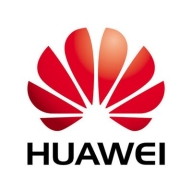

InfluxDB and Huawei eSight are competing in the data management and network monitoring category. InfluxDB has the upper hand in community support and flexibility, while Huawei eSight stands out with its integrated networking features.
Features: InfluxDB offers exceptional time series data handling, scalability, and seamless integration with software development tools. It supports real-time analytics effectively. Huawei eSight is known for device management, fault management, and traffic analysis features that allow for comprehensive IT infrastructure monitoring and control.
Room for Improvement: InfluxDB could improve in network management capabilities, user interface design, and offering more detailed analytics features. Huawei eSight can enhance scalability options, simplify its deployment process, and improve its pricing flexibility for smaller businesses.
Ease of Deployment and Customer Service: InfluxDB provides straightforward deployment in cloud environments, backed by robust community and technical support. Huawei eSight has a complex deployment model with extensive support from professional services, making it suitable for large-scale enterprises.
Pricing and ROI: InfluxDB offers a lower entry cost with flexible pricing aimed at startups and development teams, enabling quick ROI through scalable deployment. Huawei eSight requires a higher initial investment but delivers significant ROI for large organizations due to its comprehensive network management features.
| Product | Market Share (%) |
|---|---|
| InfluxDB | 0.5% |
| Huawei eSight | 0.9% |
| Other | 98.6% |

| Company Size | Count |
|---|---|
| Small Business | 5 |
| Midsize Enterprise | 4 |
| Large Enterprise | 1 |
| Company Size | Count |
|---|---|
| Small Business | 5 |
| Midsize Enterprise | 3 |
| Large Enterprise | 8 |
Huawei's eSight is a unified software suite for planning, operating, and maintaining complex enterprise ICT infrastructure from global, converged networks and data centers to multimedia and video communications that includes the facilities necessary for delivering performance and IT services. eSight provides a platform that supports infrastructure and devices from third-party providers, to develop custom management applications and improves O&M efficiency.
InfluxDB is open-source software that helps developers and enterprises alike to collect, store, process, and visualize time series data and to build next-generation applications. InfluxDB provides monitoring and insight on IoT, application, system, container, and infrastructure quickly and easily without complexities or compromises in scale, speed, or productivity.
InfluxDB has become a popular insight system for unified metrics and events enabling the most demanding SLAs. InfluxDB is used in just about every type of industry across a wide range of use cases, including network monitoring, IoT monitoring, industrial IoT, and infrastructure and application monitoring.
InfluxDB offers its users:
InfluxDB Benefits
There are several benefits to using InfluxDB . Some of the biggest advantages the solution offers include:
Reviews from Real Users
InfluxDB stands out among its competitors for a number of reasons. Two major ones are its flexible integration options and its data aggregation feature.
Shalauddin Ahamad S., a software engineer at a tech services company, notes, “The most valuable features are aggregating the data and the integration with Grafana for monitoring.”
We monitor all IT Infrastructure Monitoring reviews to prevent fraudulent reviews and keep review quality high. We do not post reviews by company employees or direct competitors. We validate each review for authenticity via cross-reference with LinkedIn, and personal follow-up with the reviewer when necessary.